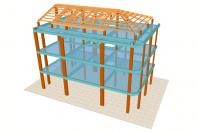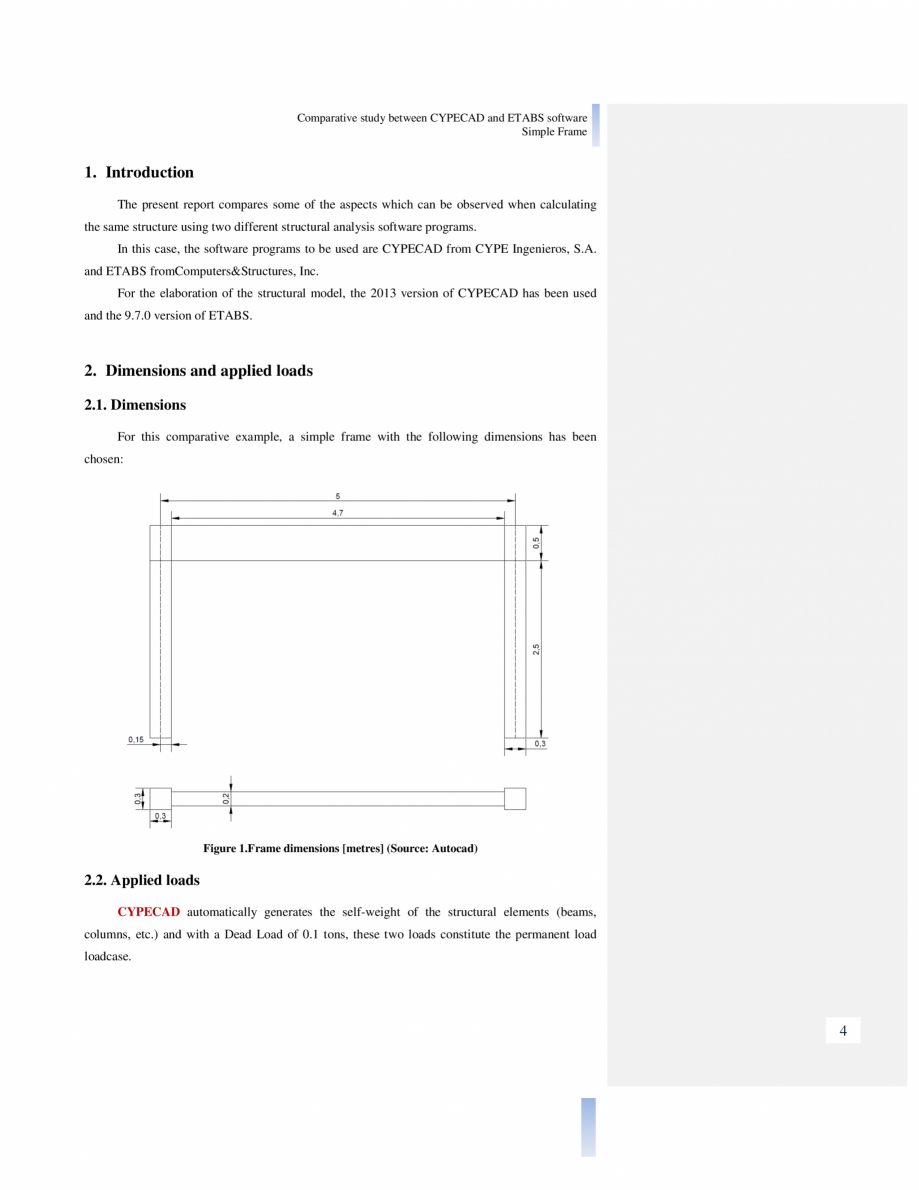Studiu comparativ Cypecad vs. Etabs CYPE
roperties (modulus of elasticity, Poisson’s ratio,
etc.) to be introduced by users. Many of the parameters defined in this example are not available by
default even though they are defined in the selected code. Therefore, ETABS requires users to have
to constantly consult the selected design code.
Processing
The processing possibilities are related to the type of analysis that can be executed. Some
observations that have been carried out prove that ETABS counts with a time-history analysis for
the linear dynamic analysis and considers the effect of the construction sequence when determining
the results.
Post-processing
The load combinations for the results output is automatic in both software programs and is
based on the design code, except the force envelopes which must be defined in ETABS.
As has been observed in ETABS and CYPECAD, the results of the analysis can be displayed
on screen using diagrams, tables and functions, or by printing the results via text files. Furthermore,
C
... ascunde
Alte documentatii ale aceleasi game Vezi toate
Fisa tehnica
48 p | EN
CYPE 3D
Fisa tehnica
44 p | EN
CYPE 3D




























![Pagina 27-Studiu comparativ Cypecad vs. Etabs CYPE Catalog, brosura Engleza s] (CYPECAD)
Figure 37.Reactions ...](https://storage.spatiulconstruit.ro/storproc/firma/h5/f5879/gama/7062/documentatie_gama/64189/pagina_documentatie_gama/477039/cype_documentatie_gama64189studiu_comparativ_cypecad_vs._etabs_page_27_477039/920.jpg?width=920)











